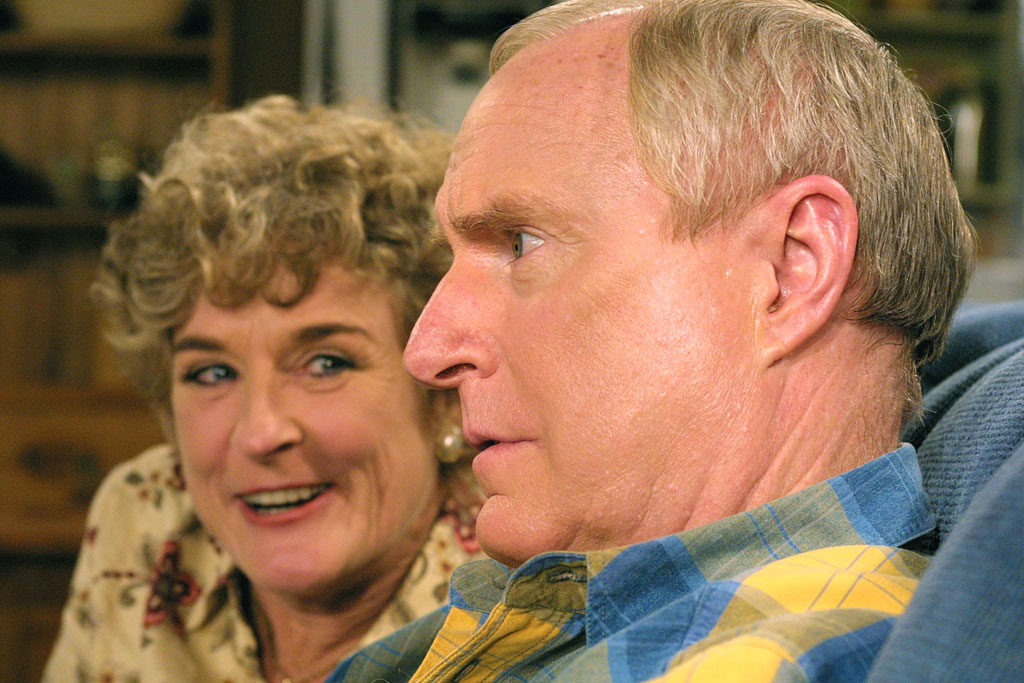Australia Just Had Its First Comprehensive Study Of Diversity On TV; It Didn’t Go Well
More than 80 percent of our main characters are white.

A landmark study on Australian television has found that a massive 82 percent of the main characters on our screens are from Anglo-Celtic backgrounds. Screen Australia has analysed 199 dramas that aired between 2011 and 2015 and determined that, depressingly, only 18 percent of the main characters on Australian TV were not white — despite the fact that they represent upwards of 32 percent of the population.
When it comes to secondary characters, 64 percent of all programs included at least one non-white character — which still seems super low — and children’s shows and comedies were more likely to be more diverse than dramas.
This study is pretty significant given it’s the first major look at the changing diversity on our screens. Besides from measuring the representation of race on TV, it also showed that only 5 percent of main characters identified as LGBTQI even though 11 percent of Australia’s population identifies as such. Notably, only 10 percent of dramas had at least one character with a disability.
Australia, it’s safe to say that we have a representation problem!

:/
One of the most puzzling findings in the study was that those surveyed argued that low numbers of racial diversity were a result of pressure from “the high cost of drama, along with the imperative to attract broad audiences and international buyers” which could make potential investors consider “untested diverse talent and stories risky”. This seems like a bit of a cop out, and is a common argument in favour of whitewashing, particularly when a significant portion of the population still doesn’t see themselves represented on screen.
Of course, all is not lost. In the last few years there have been popular shows like The Family Law, Cleverman, Redfern Now and Please Like Me that have offered a non-white and/or non-heterosexual perspective, but these are still rare examples. A bright spark in the study was that there’s been a dramatic increase in Indigenous representation on Australian TV, growing to 5 percent of main characters (in 1992, there were no sustaining roles for Indigenous Australians on TV).
Screen Australia has previously launched initiatives to combat the gender imbalance in Australian entertainment, including most recently putting $3 million into addressing the gender gap in film. This study is a great step in concretely recognising that we need to address the representation of racial and sexual diversity on screen, and depict more characters with disabilities.
“With 94 percent of Australians watching TV regularly, the medium remains powerful and influential, so the need for greater diversity is essential and we have been buoyed by the industry enthusiasm to engage with this study,” said Graeme Mason, CEO of Screen Australia.
“We don’t want tokenism, but we don’t want inaction either. Now we have the numbers, we need to work out a path towards diversity on screens together that is genuine, lasting and both creatively and commercially fulfilling.”
Diversity on Australian screens (or lack thereof) was a topic raised by many at Junkee’s inaugural Junket last year. Delegates such as The Family Law screenwriter Michelle Law, Filmme Fatales editor Brodie Lancaster and theatre-maker and performer Candy Bowers brainstormed ways to move the industry forward on this issue. When asked for her response to this latest news, Bowers maintained “there’s an answer and example to every cry”. “What about Shondaland what about Hamiliton…” she said. “You want an international market — speak to the South Asian, Black and Latinx diasporas to start.”
Junket is returning to Canberra next month. It’s a safe bet to say this issue may be on the agenda once again.
–
Junket takes place at the QT Canberra on November 1-3. Visit the Junket website here.